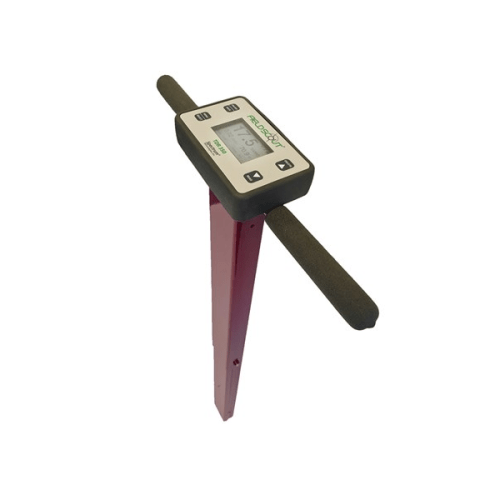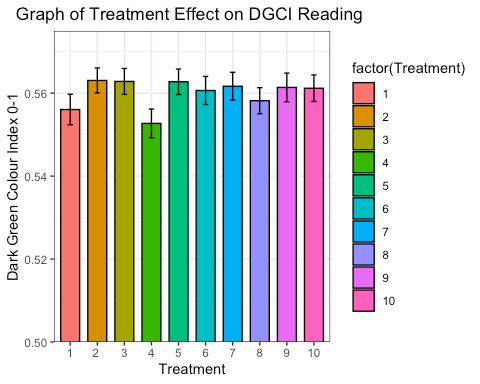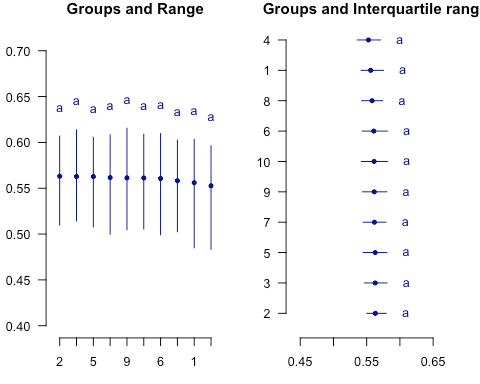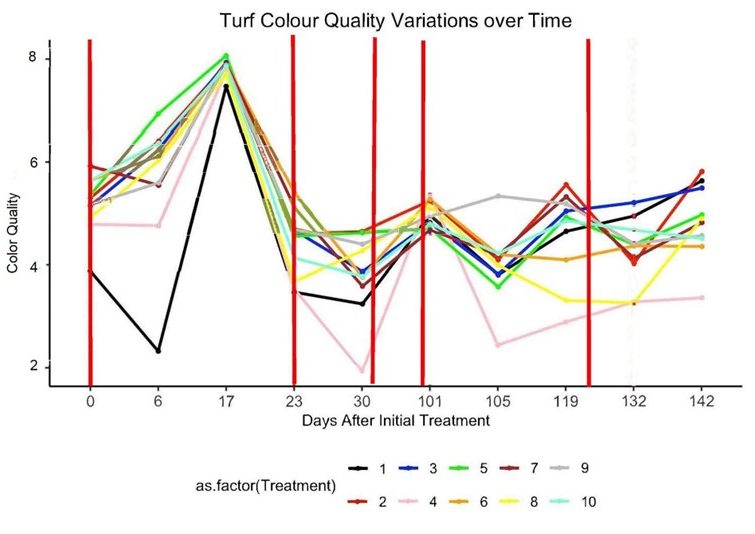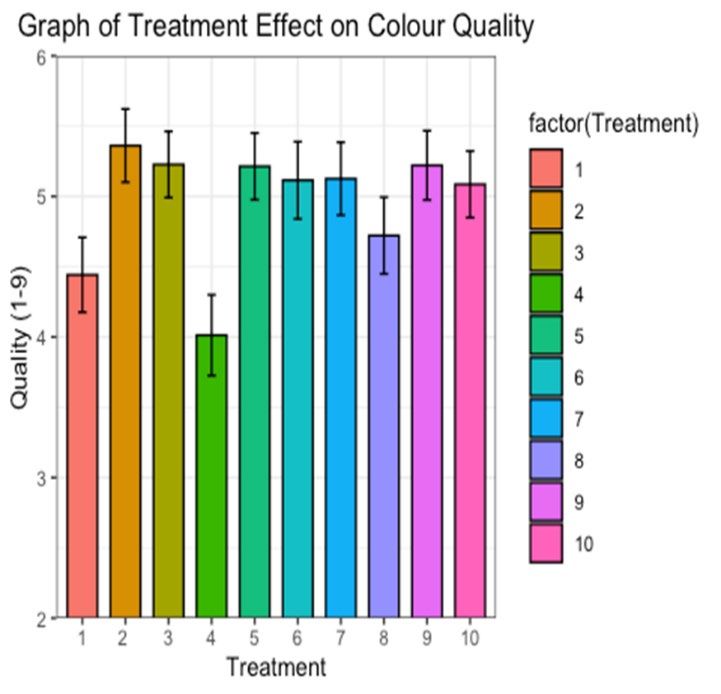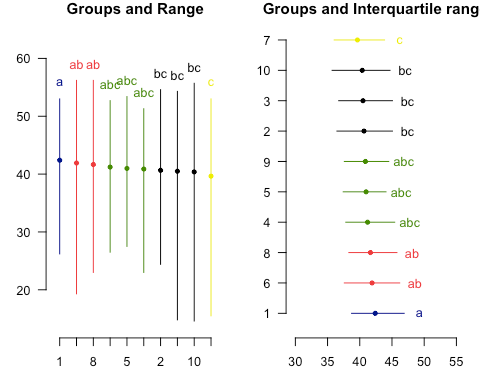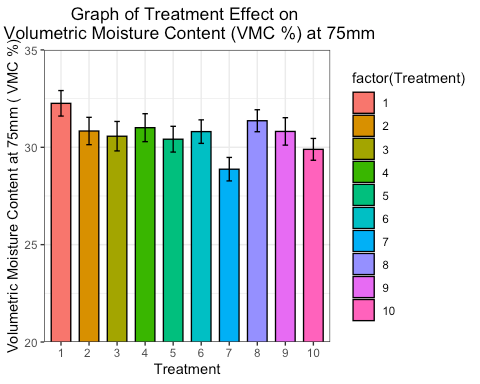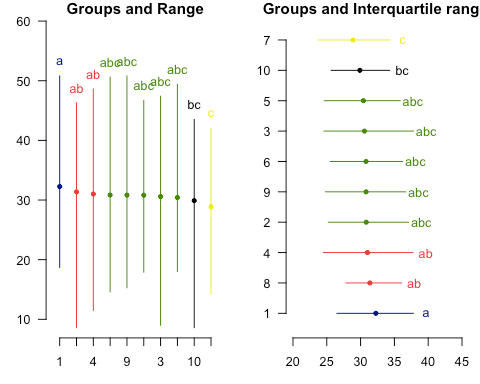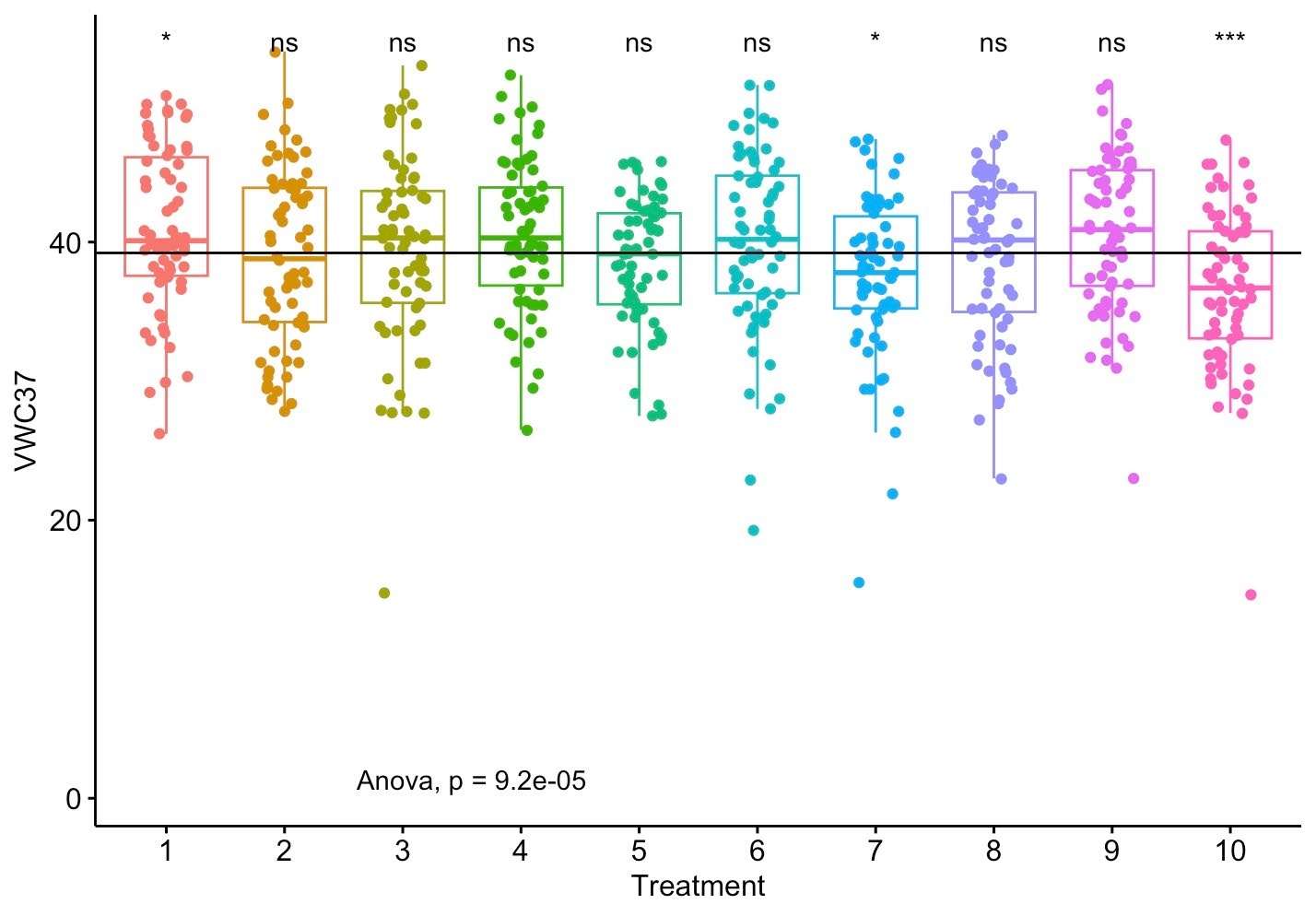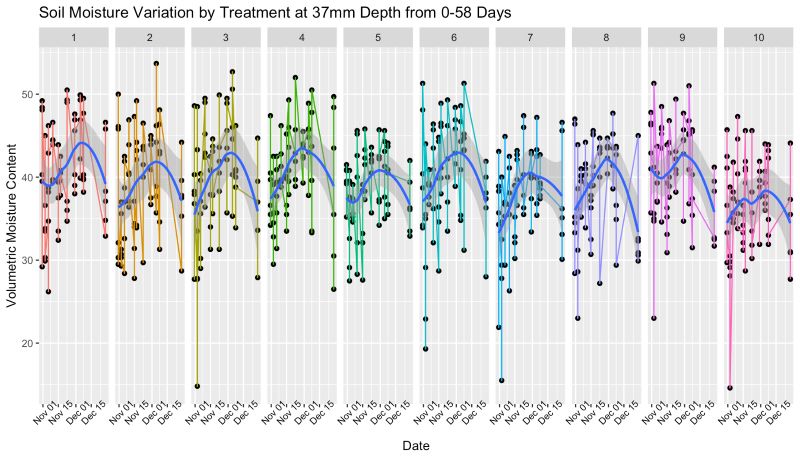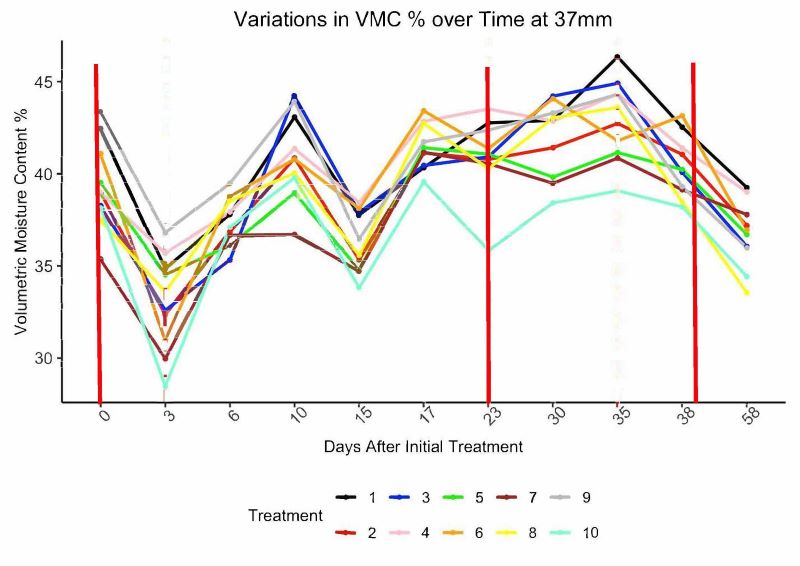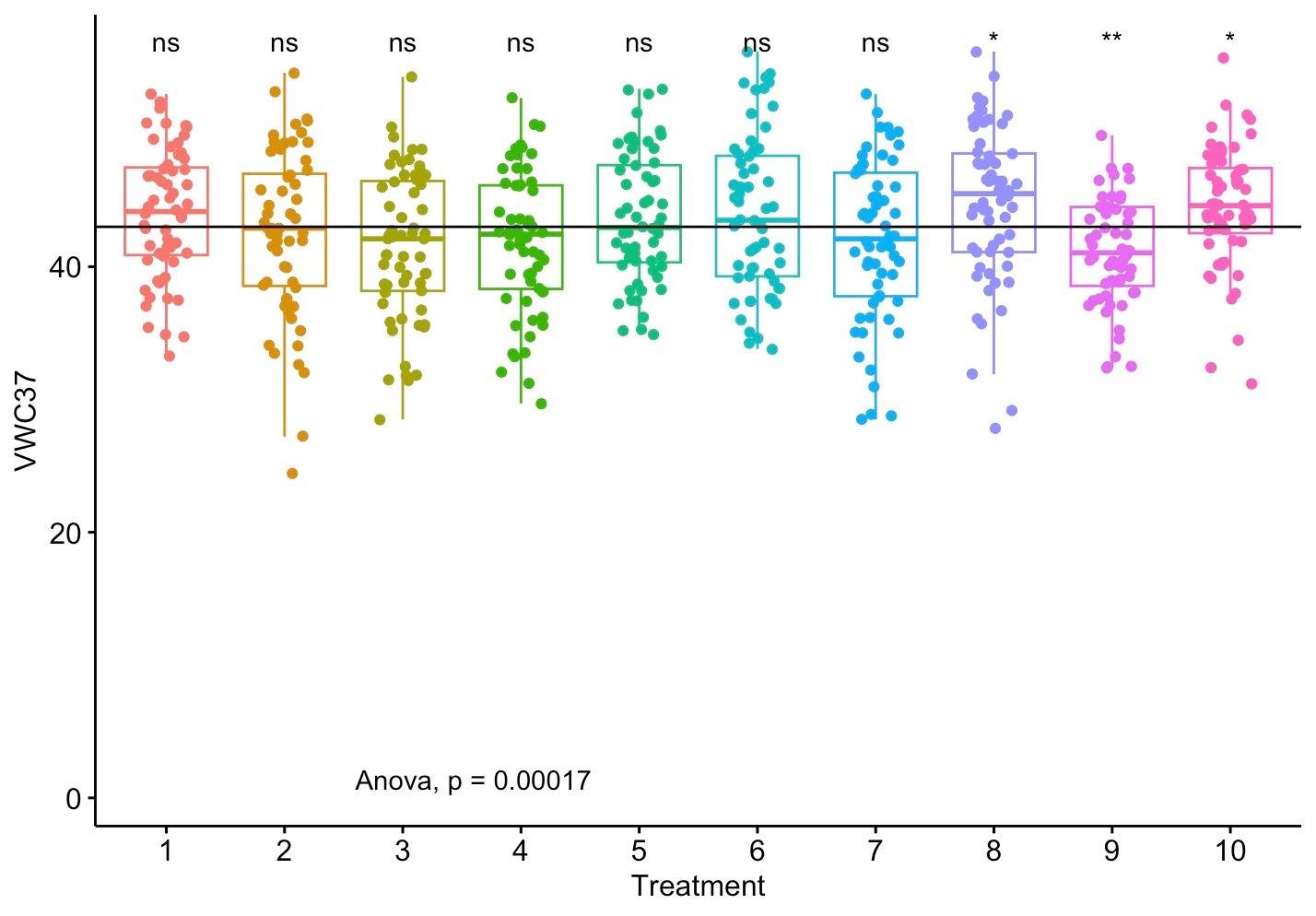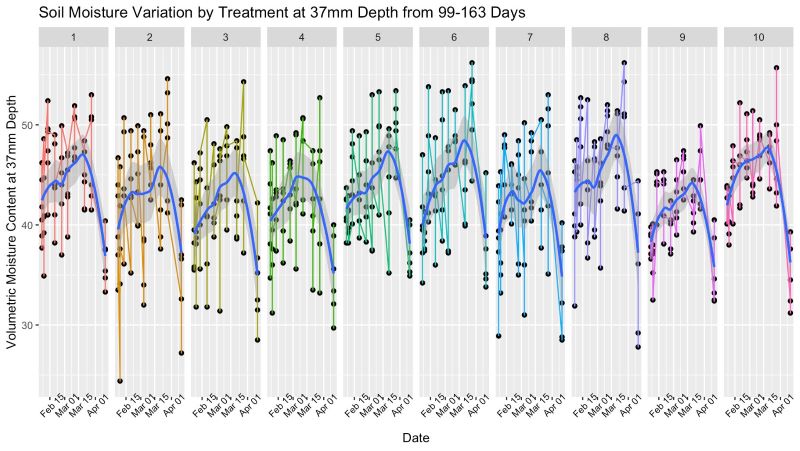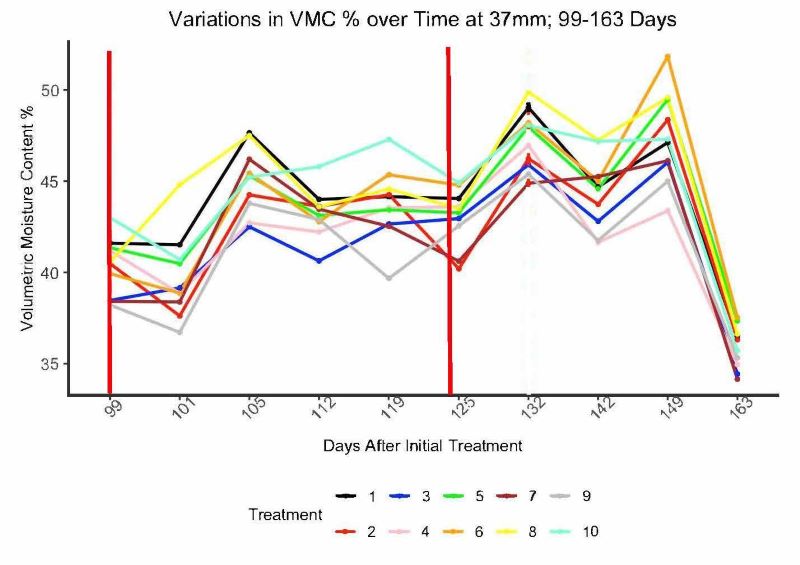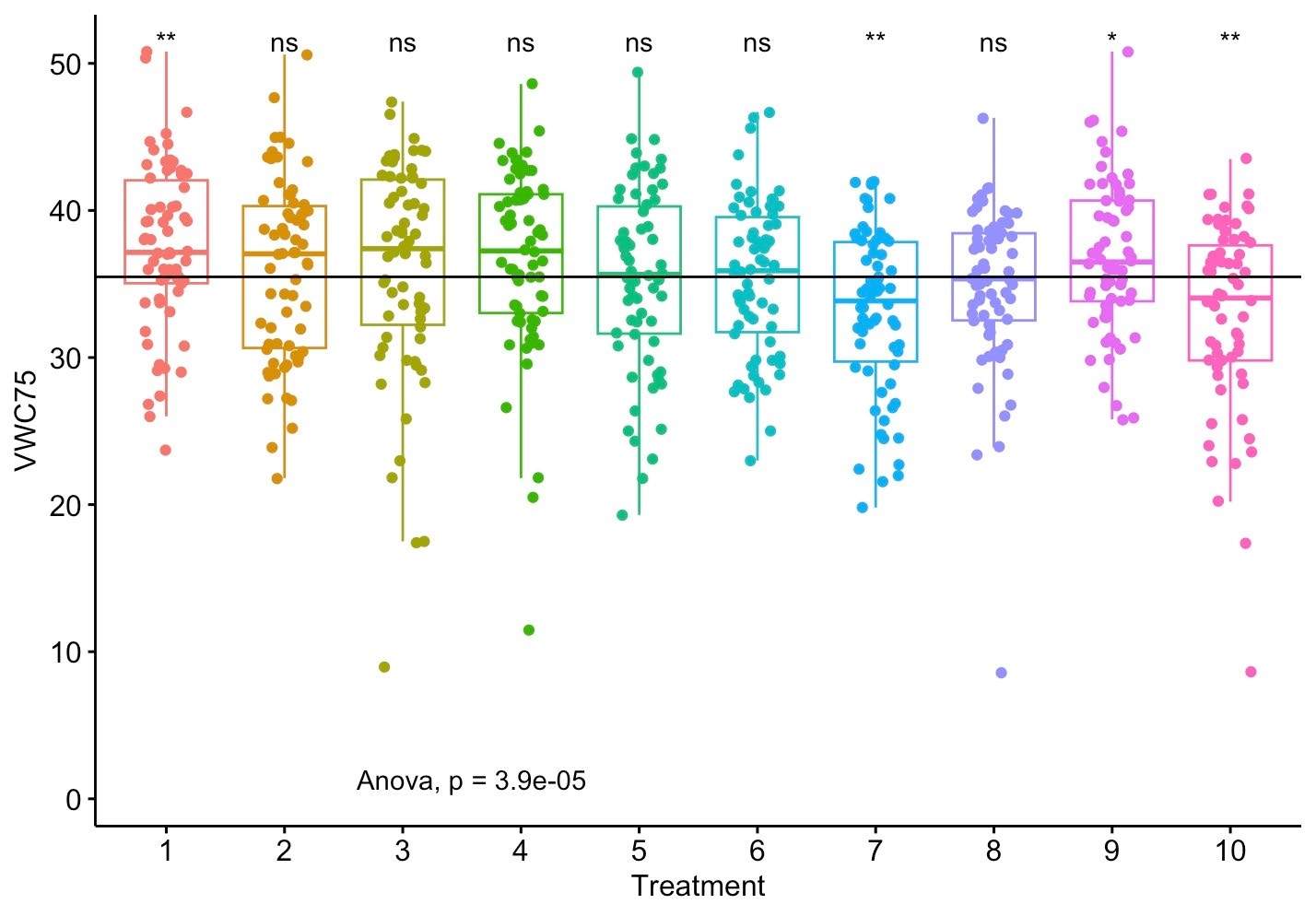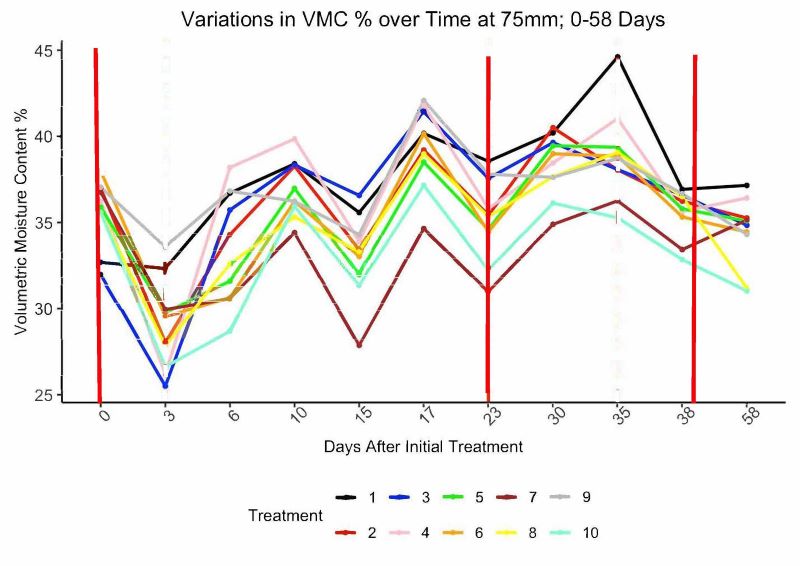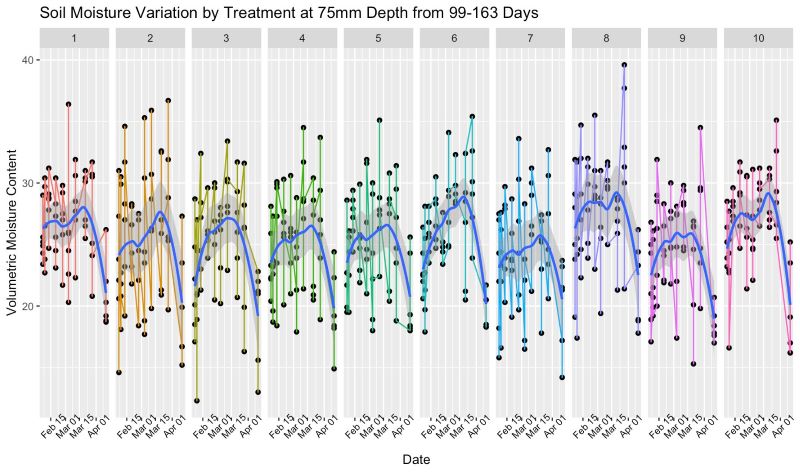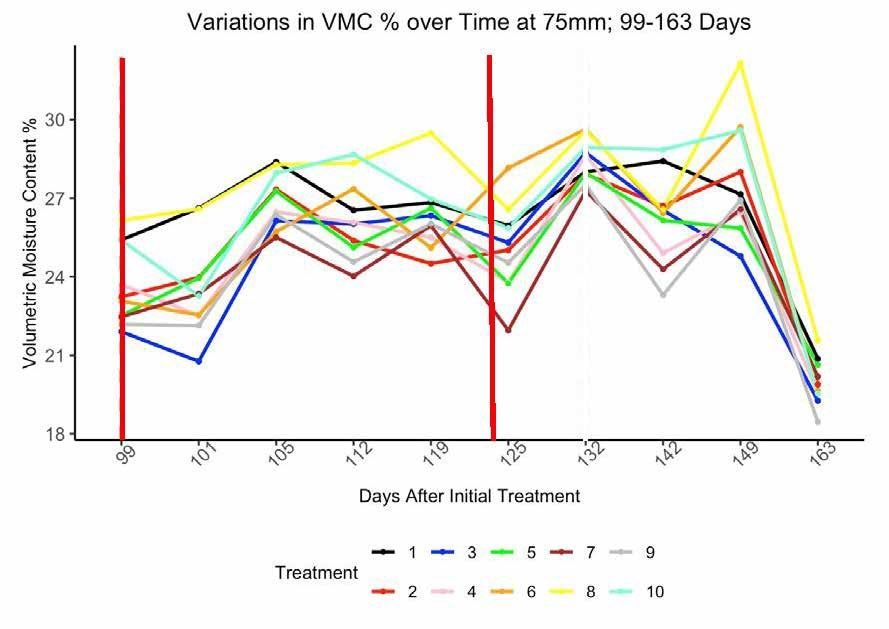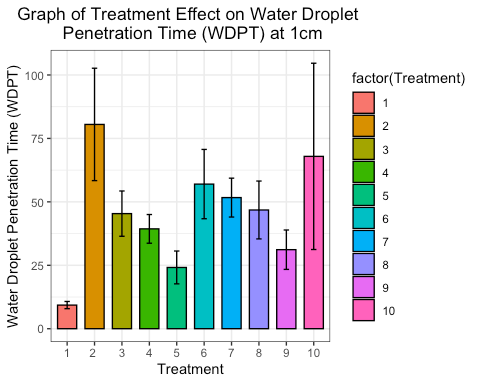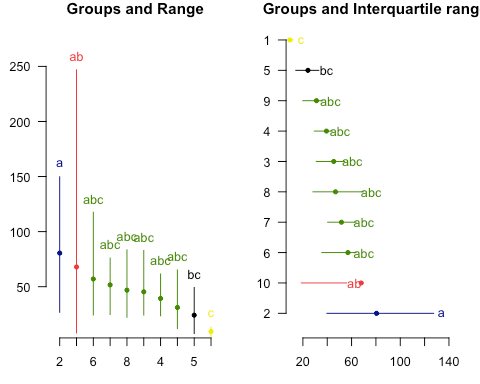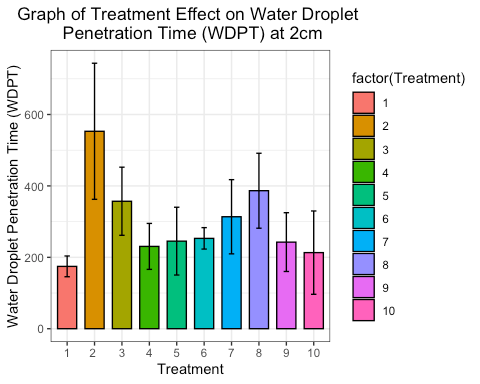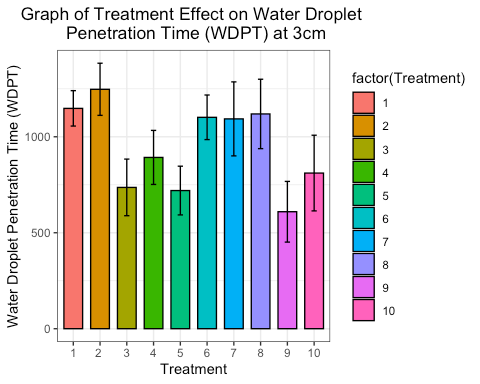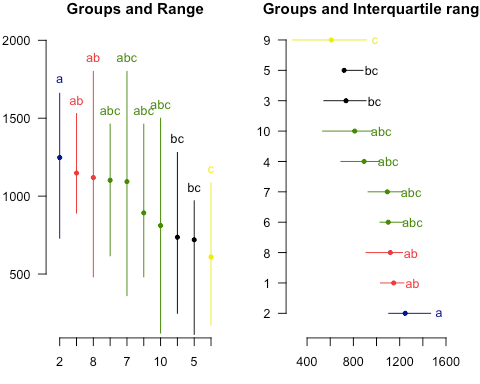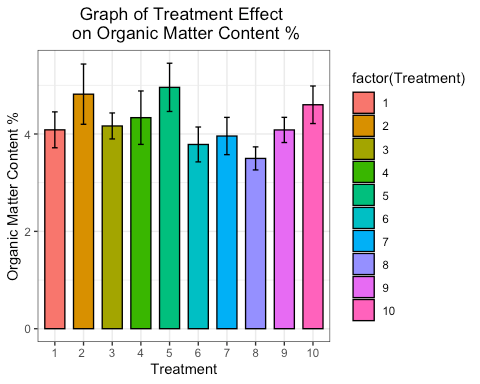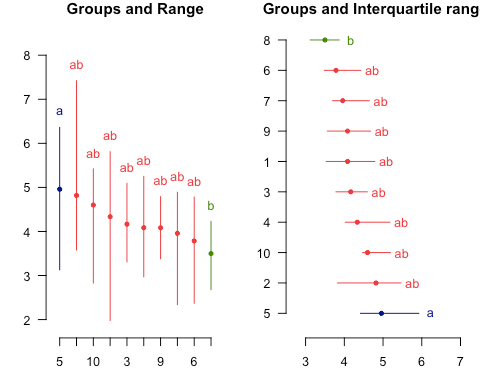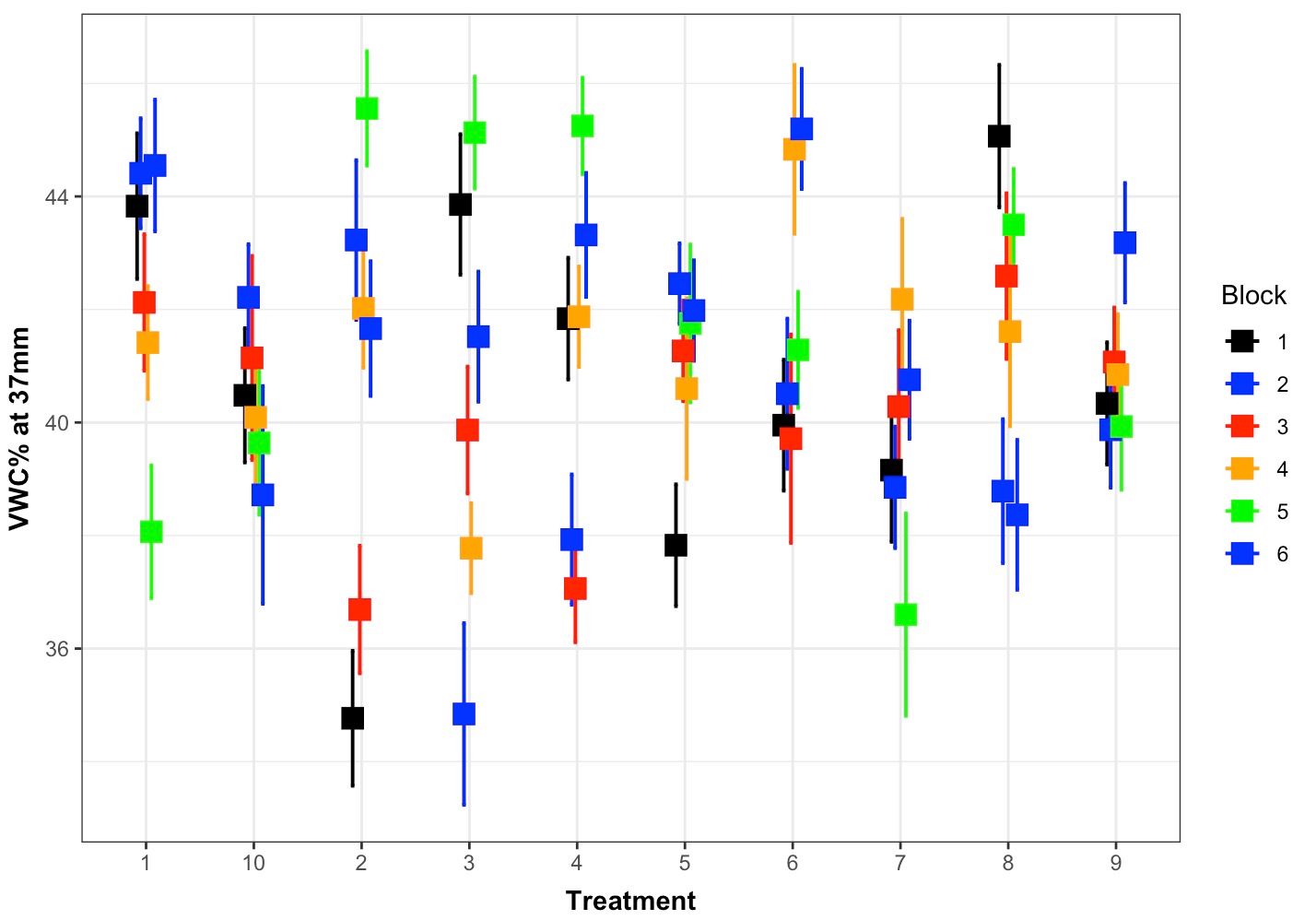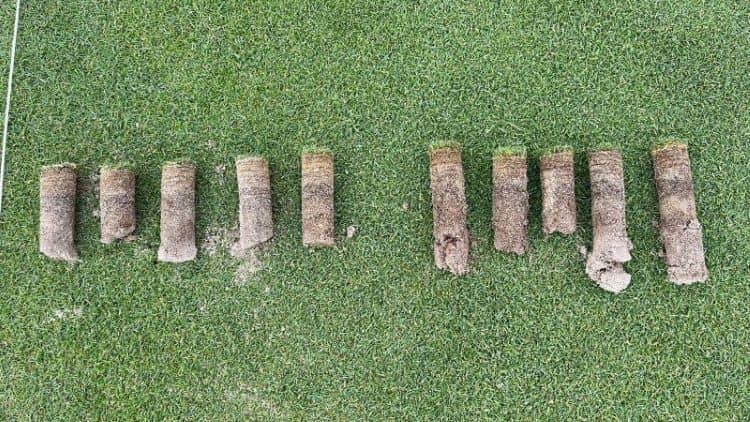Soil Wetting Agent Research
The use of soil wetting agents or soil surfactants, has become increasingly popular as they improve water efficiencies and turf quality. This soil wetting agent research is on nine soil wetting agents, and their affects on Turf Quality, Soil Moisture content, and water penetration times. This is in comparison to a proprietary salicylic acid product and an untreated control.
Tis research has helped us to develop our online soil wetting agent selector and the Turf Irrigation calculator for lawns and turfgrass.
As turf agronomists, this is the second year we have run this trial into soil surfactants, and the previous years results show that there are some definite plant health benefits from some soil surfactants. At this time I’d really like to thank Bonnie Doon Golf Club and the then Course Superintendent Cam Smith, for helping with this work.
On high sand-content root zones, you apply wetting agents to turfgrasses for two main reasons.
- Firstly, to help manage the symptoms of hydrophobic soils, and
- Secondly to improve the uniformity of soil moisture through the profile.
The trial comprises a completely randomized block design (CRBD) with six replicates, and runs for 163 days on a creeping bentgrass (Agrostis stolonifera var MacKenzie) green at Bonnie Doon Golf Club in Sydney, Australia.
All products were applied at label rates and then washed in as per their labels. Turf Quality, soil moisture contents, organic matter content and water penetration times were significantly impacted by soil wetting agents.
Introduction.
Effectively utilising water is key to maintain healthy, disease-free turfgrass surfaces. Too much water, and it produces a soft, disease prone surface, and an increase in maintenance costs. These costs are seen as frequent fungicide applications, and turfgrass that wilts under water stress due to a shallower root system.
Soil water is vital to maintain turfgrass growth. As turf managers become under pressure to produce bettter surfaces, the management of this resource becomes more important.
There has been a huge amount of research into the use of soil surfactants in turfgrass. The result is that these are now widely used in the Australian turfgrass industry.
Manufacturers make numerous claims often without any independent supporting data. This trial is to see if differences do exist in the performance of these products.
In recent years several plant health benefits have been seen with some soil wetting agents. For example, in our 2022 trials, some of these reduce dollar spot. In contrast others had little to no effect.
Little work has been done into the use of soil wetting agents in conjunction with salicylic acid. Our thinking is to leverage the hydrological properties of a soil surfactant, and the plant health benefits of salicylic acid.
These plant health benefit claims are a direct result of the surfactant molecules used. As far as we are aware this will be the first time the plant health benefits of a high loading of salicylic acid into a soil wetting agent will be trialled.
Materials and Methods for Soil Wetting Agent Research.
This trial is on the practice putting green at Bonnie Doon G.C in Sydney, NSW. This green comprises approximately 85 to 90% creeping bentgrass (Agrostis tenuis var MacKenzie). This is year 2 of a trial that we started in 2022/23.
We used Edgar II for a complete randomised block trial. The trial comprises 10 treatments with 6 replicates, with one treatment an untreated control (60 plots in total). Each plot has a surface area of a m2 with a 50 mm buffer around each plot.
The first treatment is on 31st October 2023 with further applications on 23rd November 2023, 11th December 2023, 7th February 2024, and the 4th of March 2024.
All treatments are at the label rate, and are immediately washed in with an in-ground irrigation system. This applies approximately 6mm of water.
The treatments are:
- H2Pro (ICL).
- Hydrahawk (Geoponics).
- Tour Turf ELL (Tour Turf).
- Tricure (Mitchell Products).
- HydroForce Ultra.
- Tour Turf REO (Tour Turf)
- Penterra (Geoponics).
- Control.
- Proprietary incorporating salicylic acid and
- Tour Turf FTE (Tour Turf).
Throughout this soil wetting agent research, the green is kept as normal being cut at 3mm with fertilizer and irrigation applications when required.
Assessments were as follows:
1. Turf Dark Green Colour Index (DGCI) measured with a light box.
2. Turf Colour Quality measured with a light box. .
3. Moisture Content at 37mm and 75mm with a TDR 350 (Spectrum).
4. Water Droplet Penetration Test.
5. Organic Matter by Loss on Ignition.
Digital Image Analysis.
For Turf Quality and DGCI Analysis we used a light box. A 0.75 x 0.75 m light box was placed in the centre of the plots and images taken with a Panasonic DMC-TZ80. On each sample date one image was taken per plot giving a total of 60 images.
The images were then run through theTurf analyzer software to determine DGCI, and Colour Quality.
Moisture Content 37 mm and 75 mm.
To measure Soil volumetric moisture content (VMC %) we used two TDR 350 (Spectrum Technologies) units. One had 37 mm (1.5 inch) tines, and the other 75 mm (3 inch) tines. One reading was taken from each trial plot with each unit and the results logged. This gives 60 readings at each depth on each sample date.
Water Droplet Penetration Test (WDPT).
19mm cores were taken three weeks after the 23rd of November application and dried at room temperature for 14 days. Water droplet penetration testing (WDPT) is then carried out on each individual core at 0-2, 2-4 and 4-6 cm depth.
This involves timing how long a drop of water takes to penetrate the soil profile at each respective depth. The test was repeated three times on each core at each depth, with the mean of the three readings then recorded.
Loss on Ignition (LOI).
We assess Organic Matter Content over a 6cm depth. 25cm diameter cores are taken from each plot and then independently tested at Westgate Laboratories in Orange.
The testing methodology involves removal of the surface vegetation to a depth of 1cm. We then air dry samples for 48 hours in a muffle furnace at 60°C.
The oven-dry samples are then ashed in a muffle furnace at 440°C for 4 hours. The material that remains after ignition is the ash, with the ash content expressed as a percentage of the mass of the oven-dried sample.
% Ash Content = (C X 100)/B
where: C = ash weight in g, and B = oven-dried test specimen, weight in g.
The calculation to determine the amount of organic matter by difference, is as follows:
% Organic matter = 100.0 – D
where: D = ash content, %.
If there is an increase root growth, organic matter contents will increase over the control. The assumption is that as this is initially a USGA spec rootzone, any increases in organic matter are due to increases in root growth.
Statistical Analysis of this Soil Wetting Agent Research
Statistical analysis used the R Studio, agricolae package. All data were subjected to two-way ANOVA (analysis of variance) to determine the Treatment effects. Treatment means were separated using the Duncan’s multiple range test at the P = 0.05 level of probability.
Results of Soil Wetting Agent Research.
Dark Green Colour Index (DGCI).
Over the duration of the trial, Digital Image Analysis there is no significant difference (P<0.05) between the treatments.
Colour Quality.
With Colour Quality, significant differences in turf quality do exist between treatments (P<0.05).
Volumetric Water Capacity (VWC) %.
At 37 mm significant differences do exist between treatments (P<0.05). H2Pro Trismart has significantly higher soil moisture levels than Hydrahawk, Tour Turf ELL, Penterra, and Tour Turf FTE. Penterra is the only treatment to be significantly lower than the control.
At 75 mm, Penterra continues to have a significantly lower moisture content than the Control. Penterra is also significantly lower than Tricure and H2Pro Trismart.
This soil wetting agent research can be divided into two clear timeframes. From the trial start to 58 days, and then again from 99 days to 163 days.
When we plot the results for 0-58 days at 37 mm vs the base mean we get a clearer idea of how these soil surfactants perform.
In this instance Tour Turf FTE gives a highly significant result (P ≤ 0.001), while H2Pro Trismart and Penterra are significant at P < 0.05.
When we plot the results for 99-163 days at 37mm vs the base mean we see that the proprietary surfactant plus salicylic acid (9) (P < 0.01), the Control and Tour Turf FTE (P < 0.05) are the only treatments that give significant results with the soil moisture content.
The results for 0-58 days at 75 mm vs the base mean show a repeat of the 0–58-day results. Tour Turf FTE, H2Pro Trismart and Penterra are significant at P < 0.01. The proprietary surfactant plus salicylic acid is significantly higher at P < 0.05.
The results for 99-163 days at 75 mm vs the base mean show the Control has a significantly higher soil moisture (P < 0.01). Tour Turf FTE is also significantly higher (P < 0.05) and the proprietary mix and Penterra lower at (P < 0.05).
Water Droplet Penetration Test (WDPT).
The H2Pro Trismart treatment performs well in the upper 1 cm of the rootzone, and gives a consistent rapid movement of water away from the surface. This is significantly faster than the Tour Turf FTE and Hydrahawk treatments.
At a 2cm depth H2Pro Trismart has the lowest soil moisture content. However, none of the soil surfactant treatments give significant differences in comparison to the Control at 2cm. The Tour Turf REO and H2Pro Trismart treatments both move water significantly faster than the Hydrahawk treatment.
At 3 cm the proprietary treatment is the only one to show a significantly lower soil moisture content than the Control. The Gilba proprietary, HydroForce Ultra and Tour Turf ELL all have significantly lower water droplet penetration times in comparison to Hydrahawk.
Organic Matter by Loss on Ignition.
HydroForce Ultra (5) is the only treatment that has a significantly higher organic matter content than the Control. There are no significant differences between any of the other treatments.
Discussion.
The first point is that these trials are not on turf under any degree of moisture stress. Water is not limited so improvements in drought tolerance or turf quality under stress are not valid. The closest we come is the turf response to when we air dry the cores for 14 days for the Water Droplet Penetration Test (WDPT).
Summary of The Colour Quality Results.
In the work of Leinauer (2007), in 2 of 9 locations they saw a decline in turf quality with TriCure. We also see this over the duration of the trial. The TriCure Treatment and H2Pro Trismart, both cause an initial decline in Colour Quality after application.
The initial drop off in turf Colour Quality after the H2Pro stops with follow up applications, as the rate reduces from 25L/Ha to 10L/Ha.
With the TriCure we initially proposed that this is due to a delay in the wash in after the first Treatment. This was due to irrigation issues resulting in a three-to-four-hour delay before irrigation. However, this pattern of a drop off in Turf Quality continues after each application of TriCure, even when we immediately water it in.
On this basis we would be wary of the label that states immediate watering-in is not necessary. On the 31st of October the temperature was 29°C which might explain this initial phytotoxicity.
However, the temperatures on the other application days were 23.1 °C, 27.3°C, 23.5°C and 22.9°C, and on all these days watering in was immediate. Even then there was still some phytotoxicity. On this basis we strongly suggest immediately washing in.
Over the trial duration the only treatments to not give significantly higher Colour Quality than TriCure are the control and H2Pro Trismart.
Summary of The Dark Green Colour Index (DGCI) Results.
There are no significant differences between any of the soil surfactant treatments and the control in regard to the Dark Green Colour Index.
Volumetric Moisture Capacity (VMC %).
This research raises the question what is a good soil wetting agent?
- Does a good soil wetting agent increase the soil moisture content of a soil profile or move it away from the surface?
- Even if a soil wetting agent holds water in the soil profile is this available to the turfgrass? From the condition of the turfgrass when air dried for 14 days this suggests that this isn’t necessarily the case with all soil surfactants.
- Does a good soil wetting agent have plant health benefits?
Jiang et al (2022) studied 21 soil wetting agents, including Tricure. They found that some can hold up to 1.4-times additional Plant Available Water (PAW) than others.
Interestingly they class Tricure as only being able to hold moderate amounts of PAW, ranging from between 7.5 % and 6.3%.
Over the duration of our trial Penterra, consistently gives lower VMC% at both the 37 and 75 mm depths.
In contrast the Hydrahawk and H2Pro Trismart both give the highest VMC%. This is also the case when we independently look at the two sample periods.
However, H2Pro has the advantage that it quickly moves water away from the surface even in a hydrophobic soil. HydroForce Ultra and Tour Turf REO also seem to be able to move water quickly away from the surface, and retain it in the top 1cm of the profile.
The fact that some of these wetting agents seem to hold water has both positive and negative impacts.
In our 2022 work we found that 7 out of 10 soil wetting agents cause softer greens. As we didn’t measure soil moisture at 37 mm, we cannot conclusively say that this is the reason, but Bauer (2017) found that wetting agent applications influence surface firmness in 2017 work.
Moisture Uniformity.
The other key requirement from a soil wetting agent is uniformity. In this trial, Tour Turf FTE , the proprietary mix and HydroForce Ultra give more consistent results at a depth of 37 mm. There are minimal ‘spikes’ or ‘troughs’ in soil moisture with these.
Summary of The Water Droplet Penetration Test (WDPT) Results.
A lot of variation exists between the wetting agents. Some soil surfactants persist longer than others. By taking the samples three weeks after the 2nd treatment it is well within the label claims regarding application intervals.
H2Pro performs well in this test, however after teh initial 25 L/ha the rate drops to 10L/Ha. This suggests that if we carry out the same test at the lower rate, it possbly may give teh same results. Further work needs to be done to confirm this.
The H2Pro Trismart treatment performs well in the upper 1cm of the rootzone and rapidly moves water away from the soil surface. This was significantly faster than Tour Turf FTE and Hydrahawk.
At the three-week testing interval there is a strong indication that the H2Pro Trismart, HydroForce Ultra and the Proprietary mix all still work at the 1cm depth.
This contrasts with the Tour Turf FTE and Penterra products. Despite these performing well in regard to moving water away from the surface, these soil surfactants have possibly stopped working after three-weeks.
At a depth of 2 cm H2Pro Trismart moves water quickly away from the surface. However, none of the treatments are significantly faster than the Control. The Tour Turf FTE and H2Pro Trismart both move water significantly faster than the Hydrahawk.
At the 3 cm depth the proprietary treatment is the only one to show a significantly lower soil moisture content than the Control.
Overall, these results suggest that Hydrahawk is not working after 3 weeks, as it gives the lowest Water Droplet Penetration times at all depths.
The Proprietary mix, HydroForce Ultra and Tour Turf ELL have significantly lower water droplet penetration times in comparison to Hydrahawk.
Organic Matter Content (%).
HydroForce Ultra) is the only treatment that gives a significantly higher organic matter content than the untreated Control (P < 0.05). There are no significant differences between any of the other treatments.
As the LOI is over the entire core depth it is difficult to be conclusive as to where this organic material is. The fact that we remove the top 1cm from the cores, suggests that this is not as the result of surface thatch. Instead there is a strong reason to believe that it is a result of an increase in root growth at depth. Further work needs to be done to confirm this.
Conclusions of this Soil Wetting Agent Research.
Considerable variations exist in the performance of these wetting agents in this trial. Some of the findings confirm findings from previous work, but soil wetting agent technology is advancing rapidly. Now soil wetting agents don’t just “wet the soil” and increase the soil moisture content, but can move water quickly away from the soil surface, retain it in the profile or improve turf quality.
The ramifications of this work have raised a lot of questions as regards turf management.
- Bearing in mind fungal pathogens require water, does a soil wetting agent that holds water in the profile mean you are likely to get more root disease?
- If a soil wetting agent moves water away from the surface does this mean turfgrass is going to be more prone to moisture stress?
The pleasing finding from this work is that some of these products do seem to have plant health benefits and enhance turf quality. Our 2023 work suggests that products like HydroForce Ultra can improve turf health and increase root growth. This was also found in work by Indigo Specialty in 2020.
Although not visible to the naked eye the Tricure and H2Pro Trismart do cause phytotoxicity, and because of this we recommend you wash these in immediately. This is despite the label for Tricure stating that immediate watering is not necessary.
Complete 2024 Soil Wetting Agent Report.
Acknowledgments: We would like to thank Cam Smith former Course Superinentendent at Bonnie Doon GC and now Superintendent at Sanctuary Cove CC in QLD. Craig Geeves, Course Superintendent at Duntry Leagues Country Club and formerly 2IC at Bonnie Doon Golf Club for their invalualble help with this trial.
Copyright: © 2024 copyright by the authors.
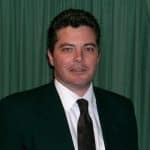
Jerry Spencer
Jerry has an Hons Degree in Soil Science (1988) from Newcastle Upon Tyne University. He then worked as a turf agronomist for the Sports Turf Research Institute (STRI) until 1993.
He gained a Grad Dip in Business Management from UTS in 1999. He has held a number of technical roles for companies such as Arthur Yates (Commercial Technical Manager) and Paton Fertilizers (Organic, turf specialty and controlled release fertiliser) portfolios.
In 2013 he established Gilba Solutions as independent sports turf consultants and turf agronomists. Jerry has written over 100 articles and two books on a wide range of topics such as Turf Pesticides and turfgrass Nutrition which have been published in Australia and overseas.



